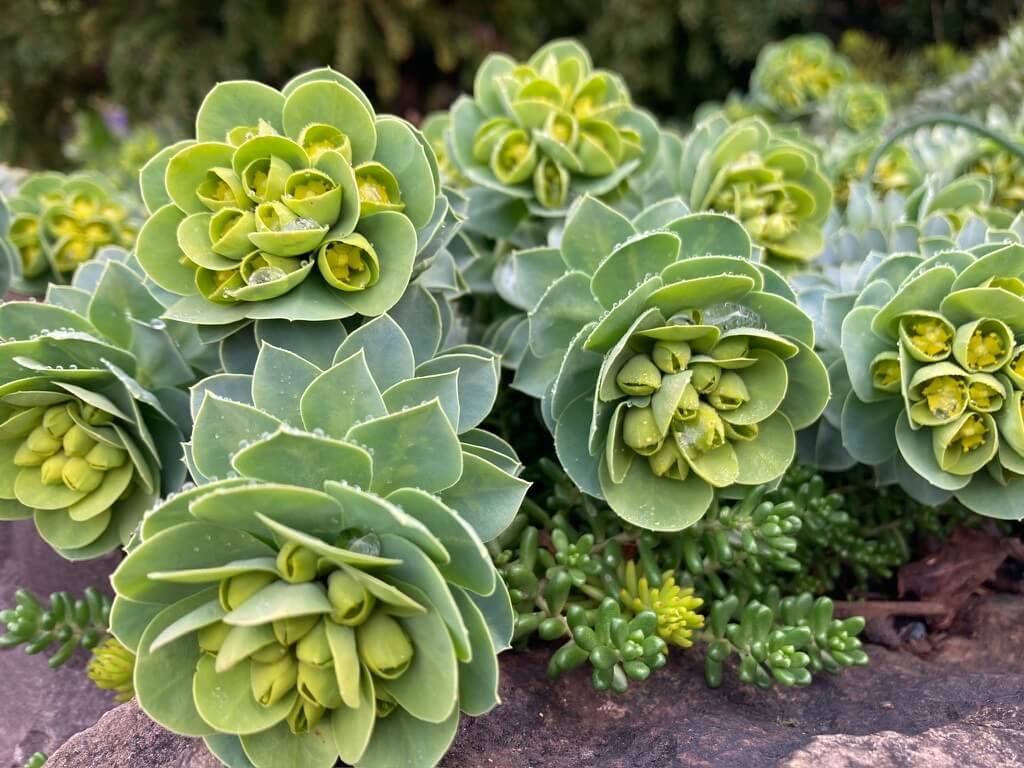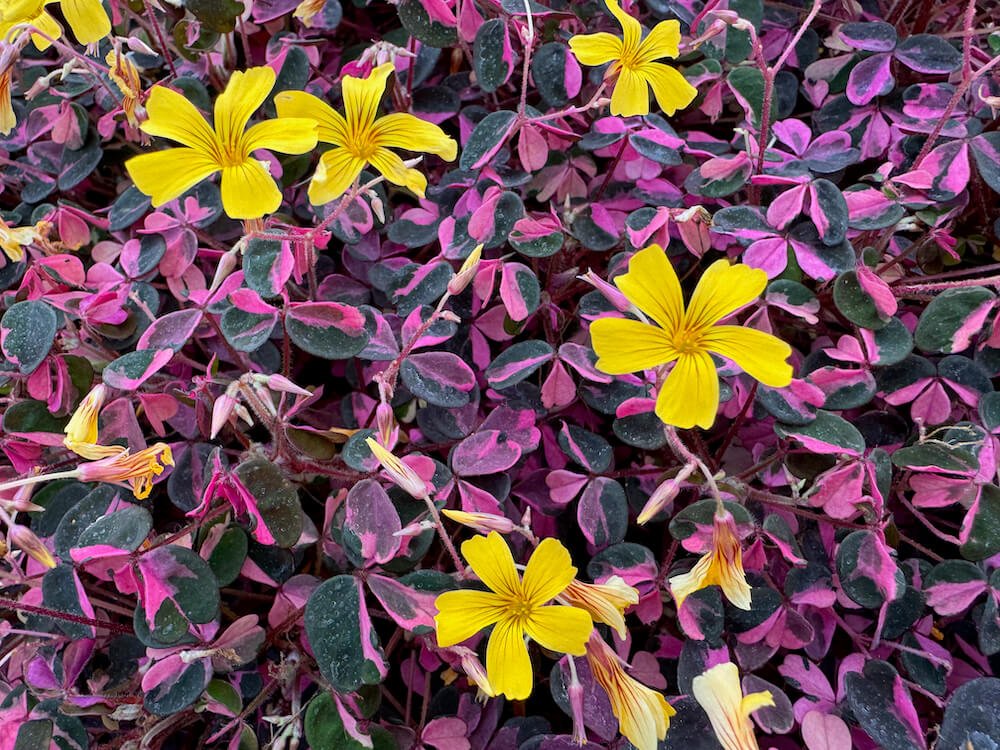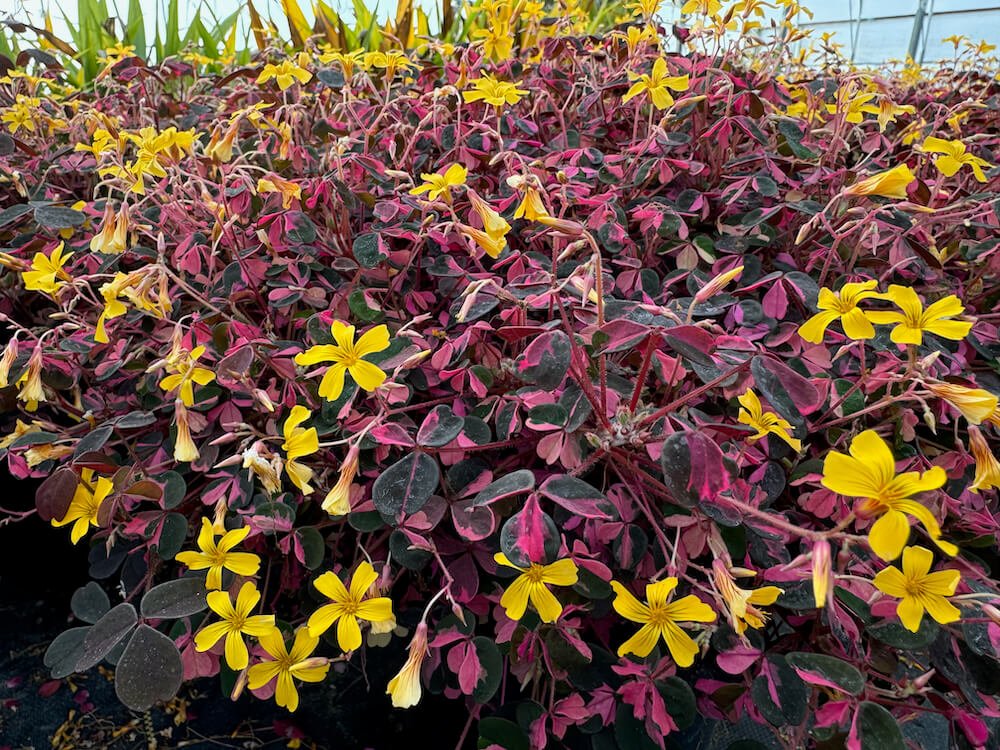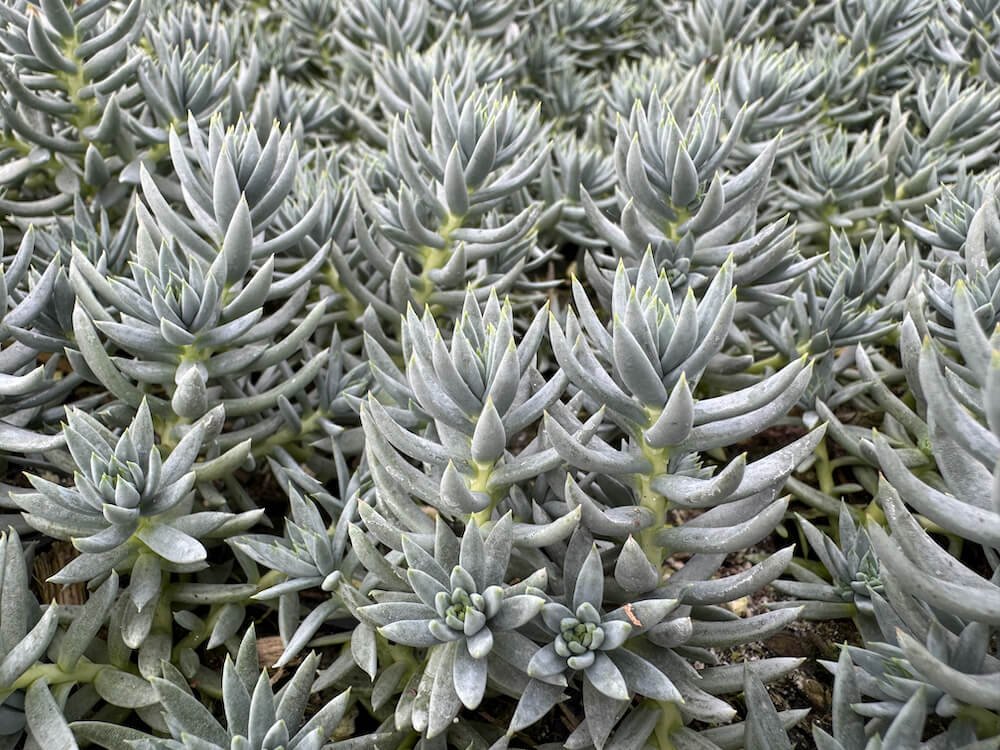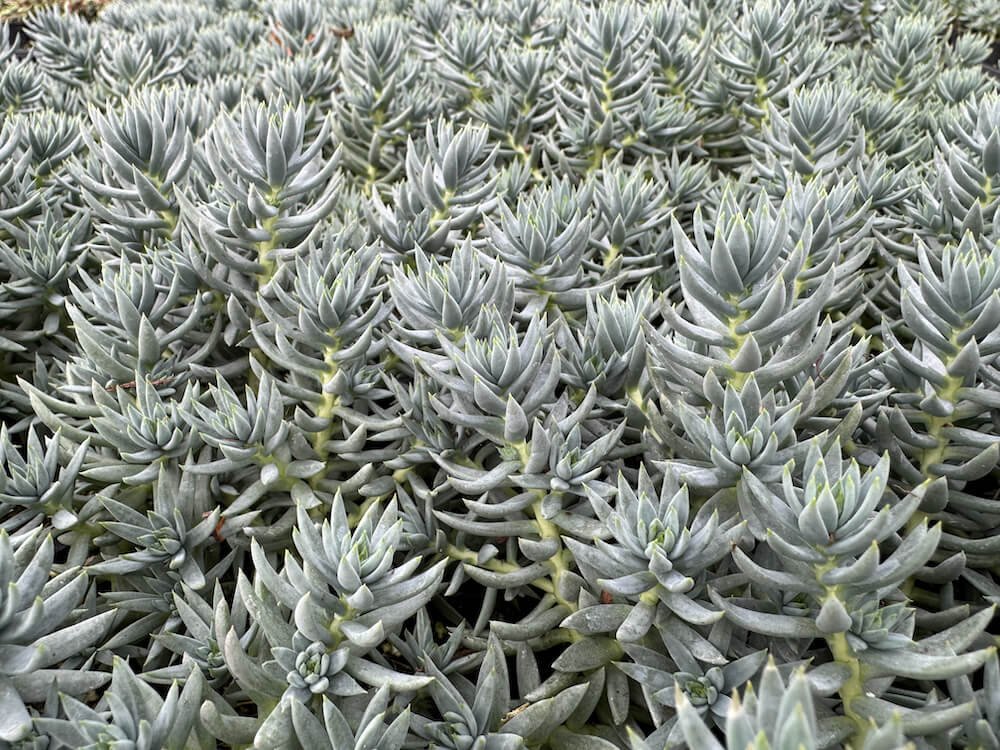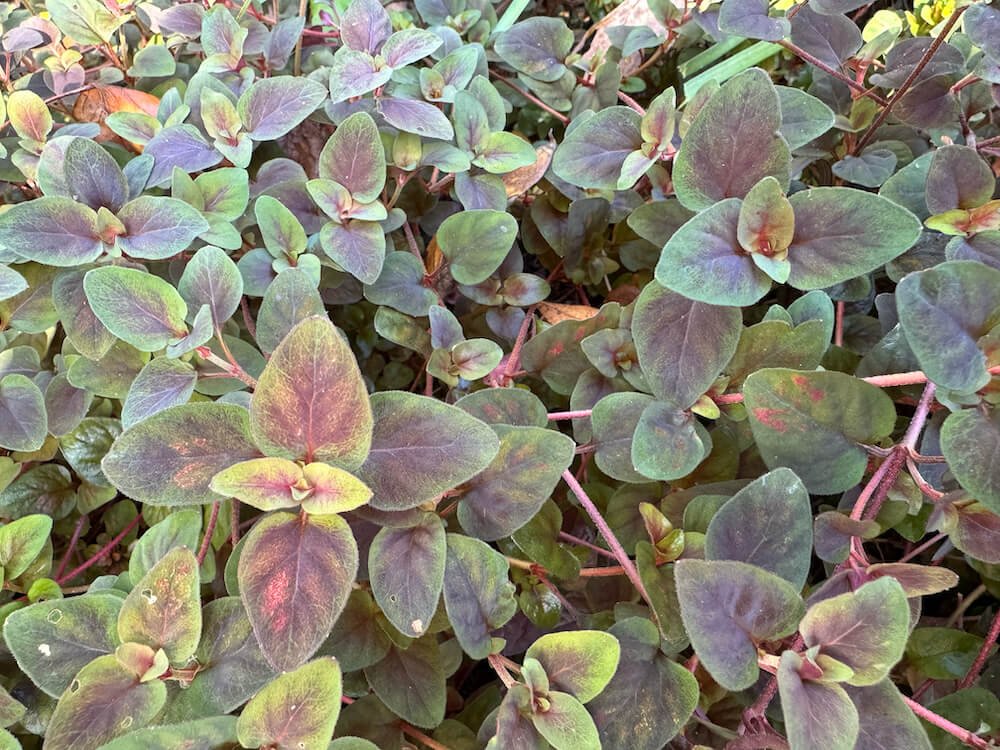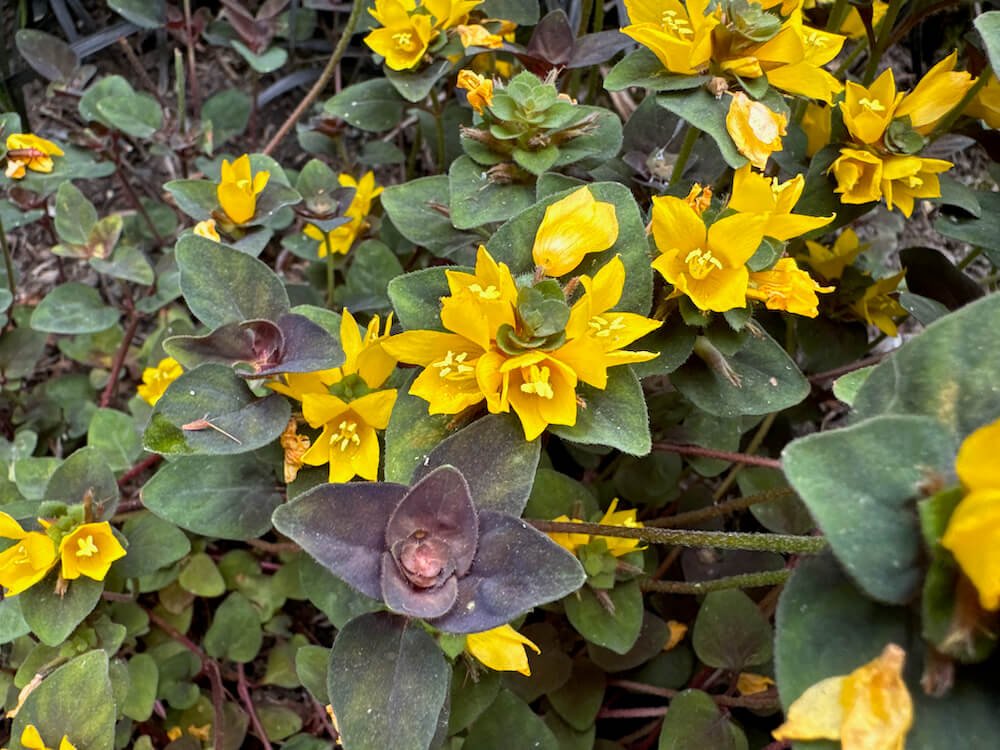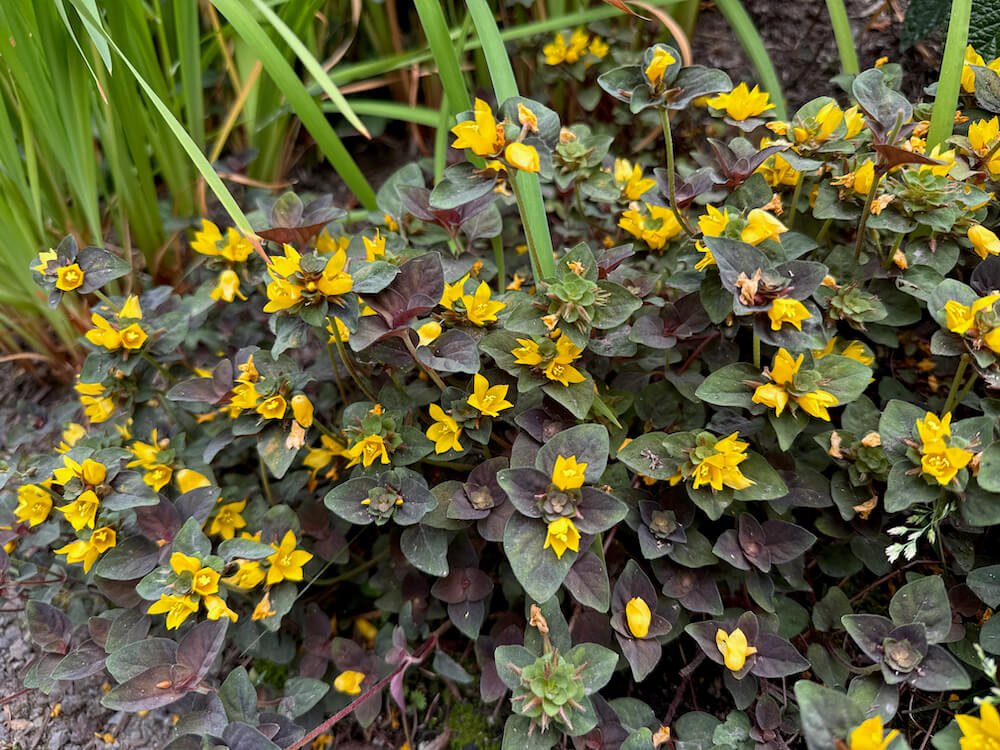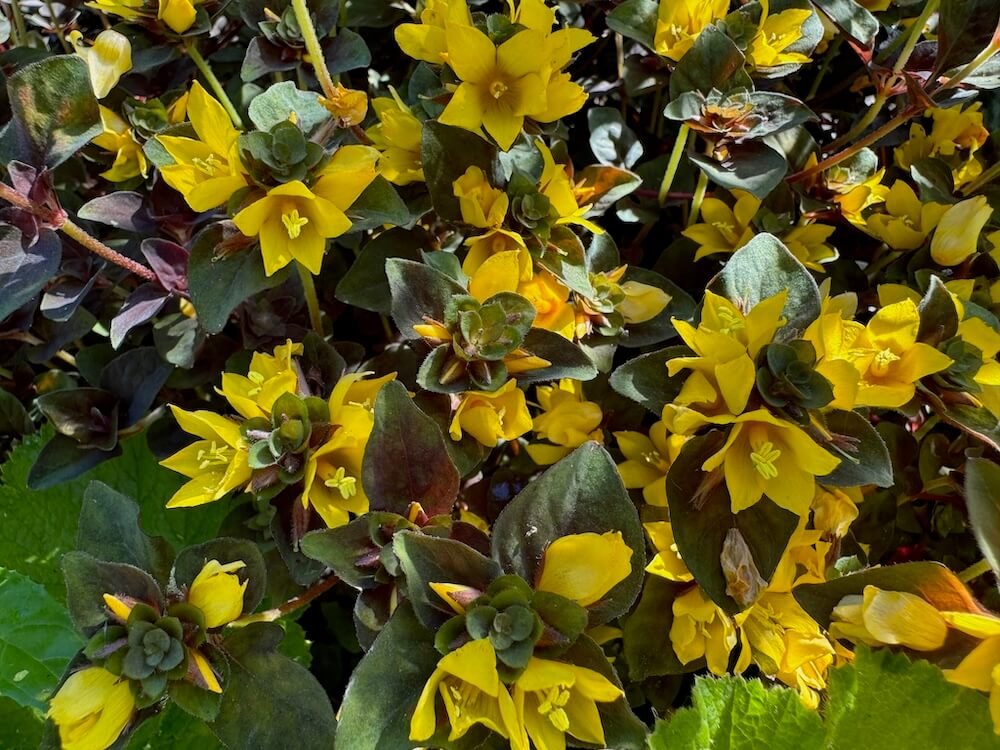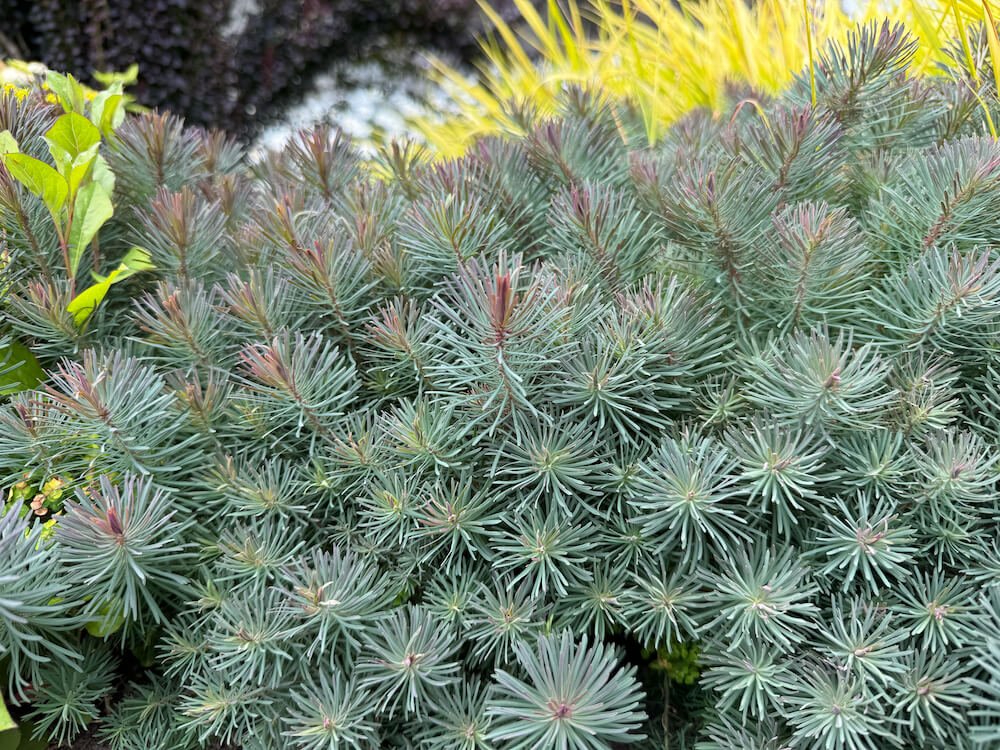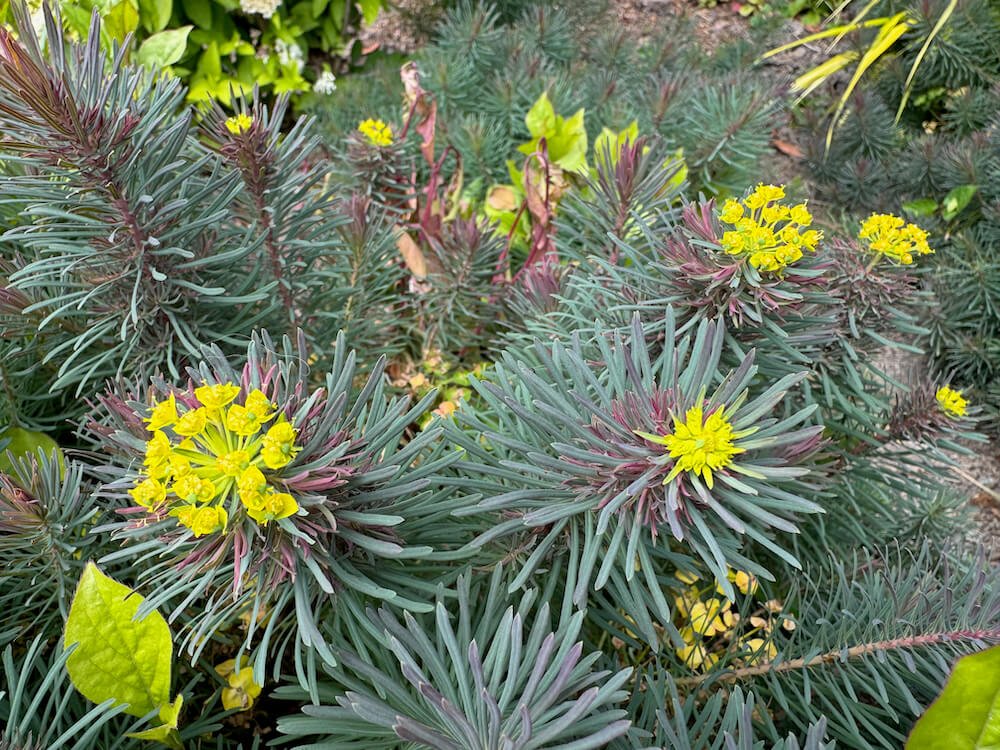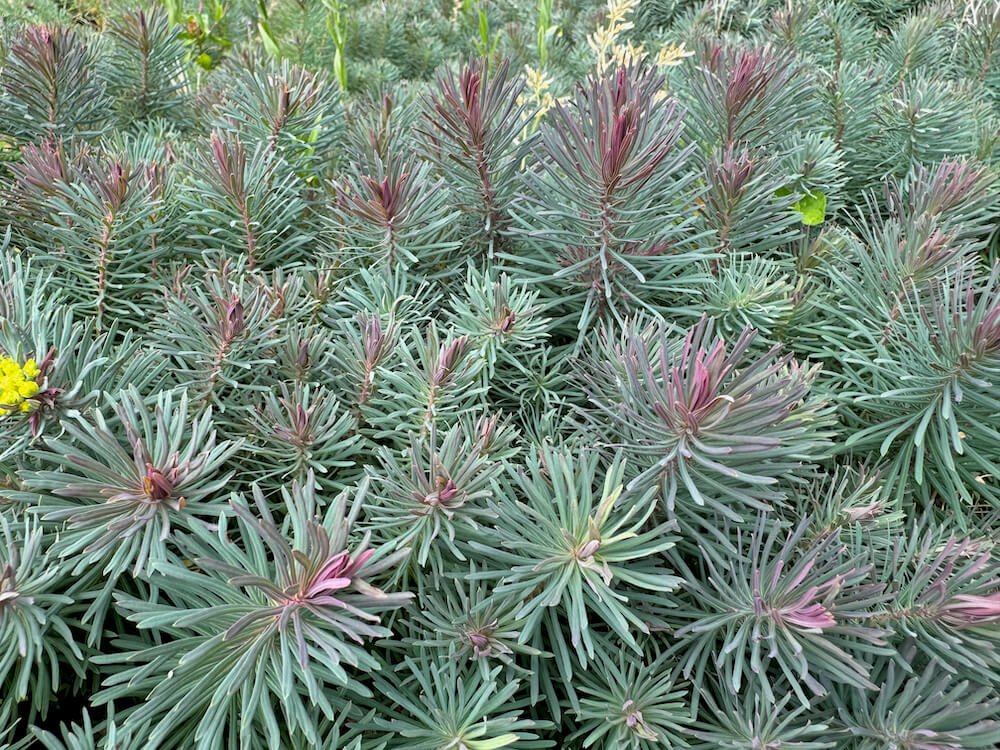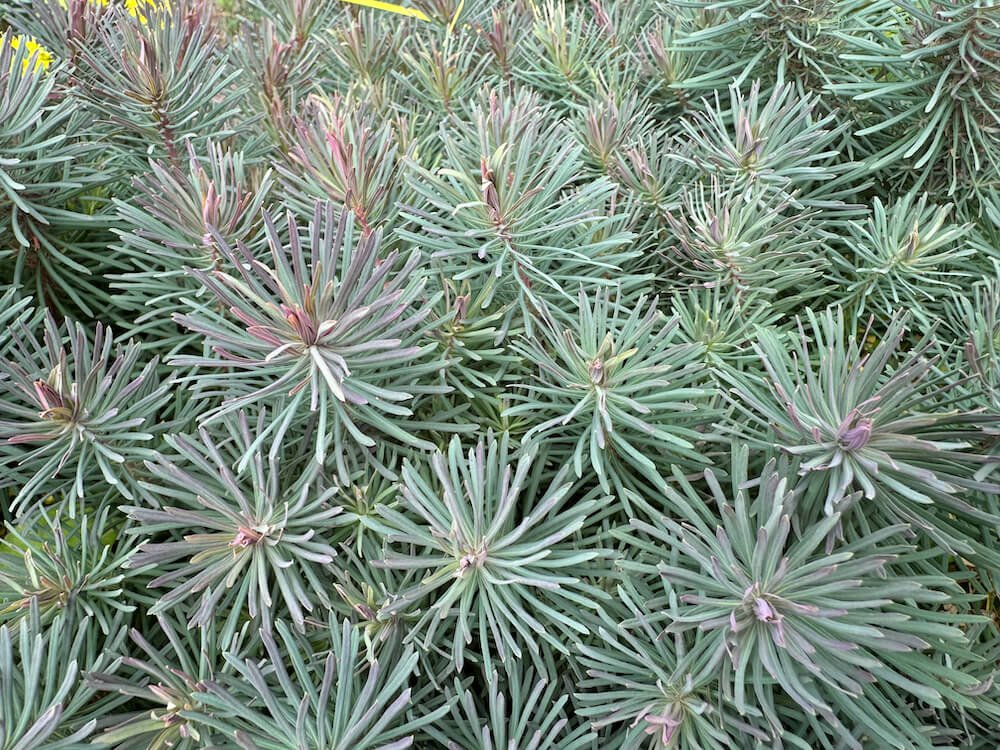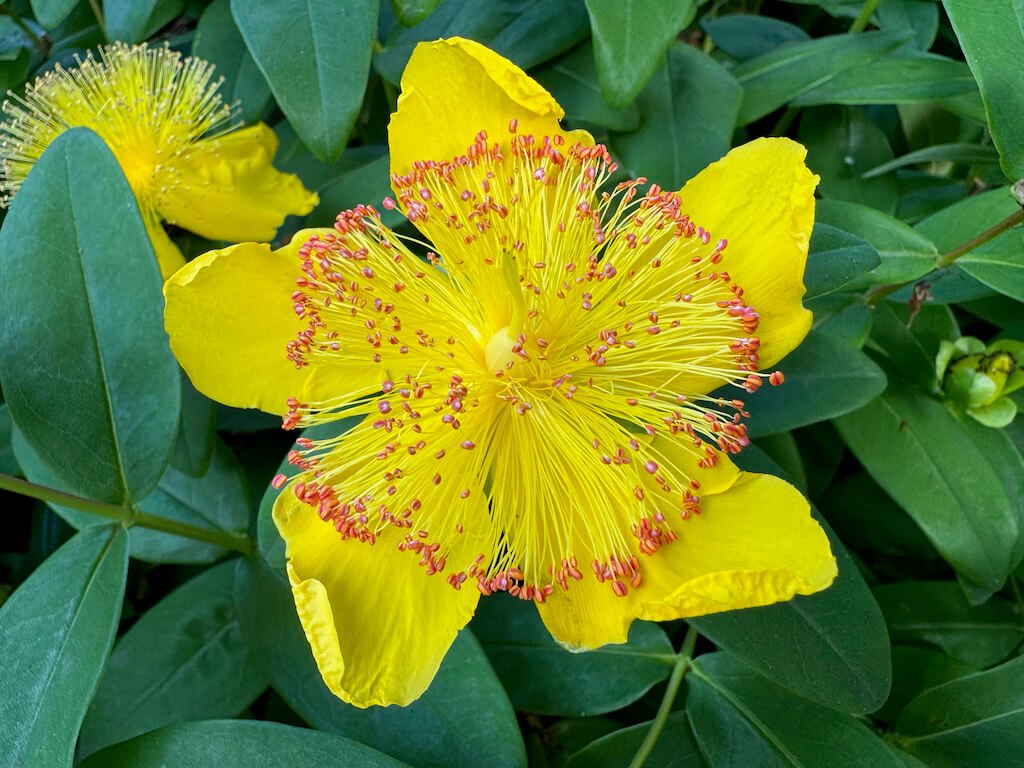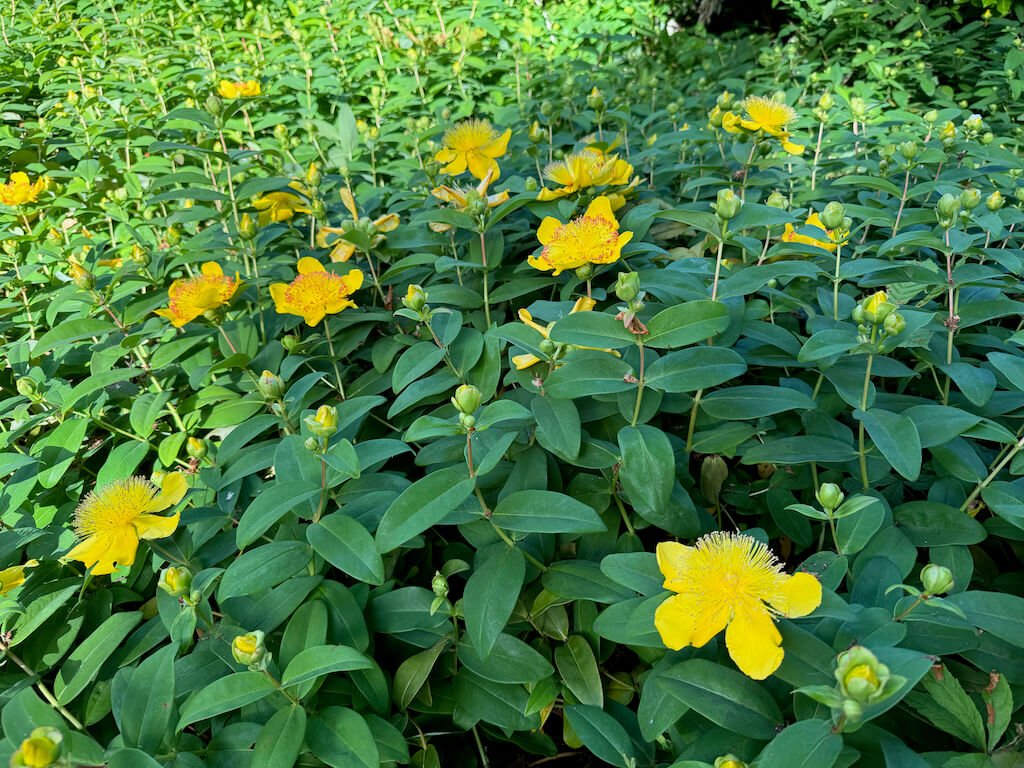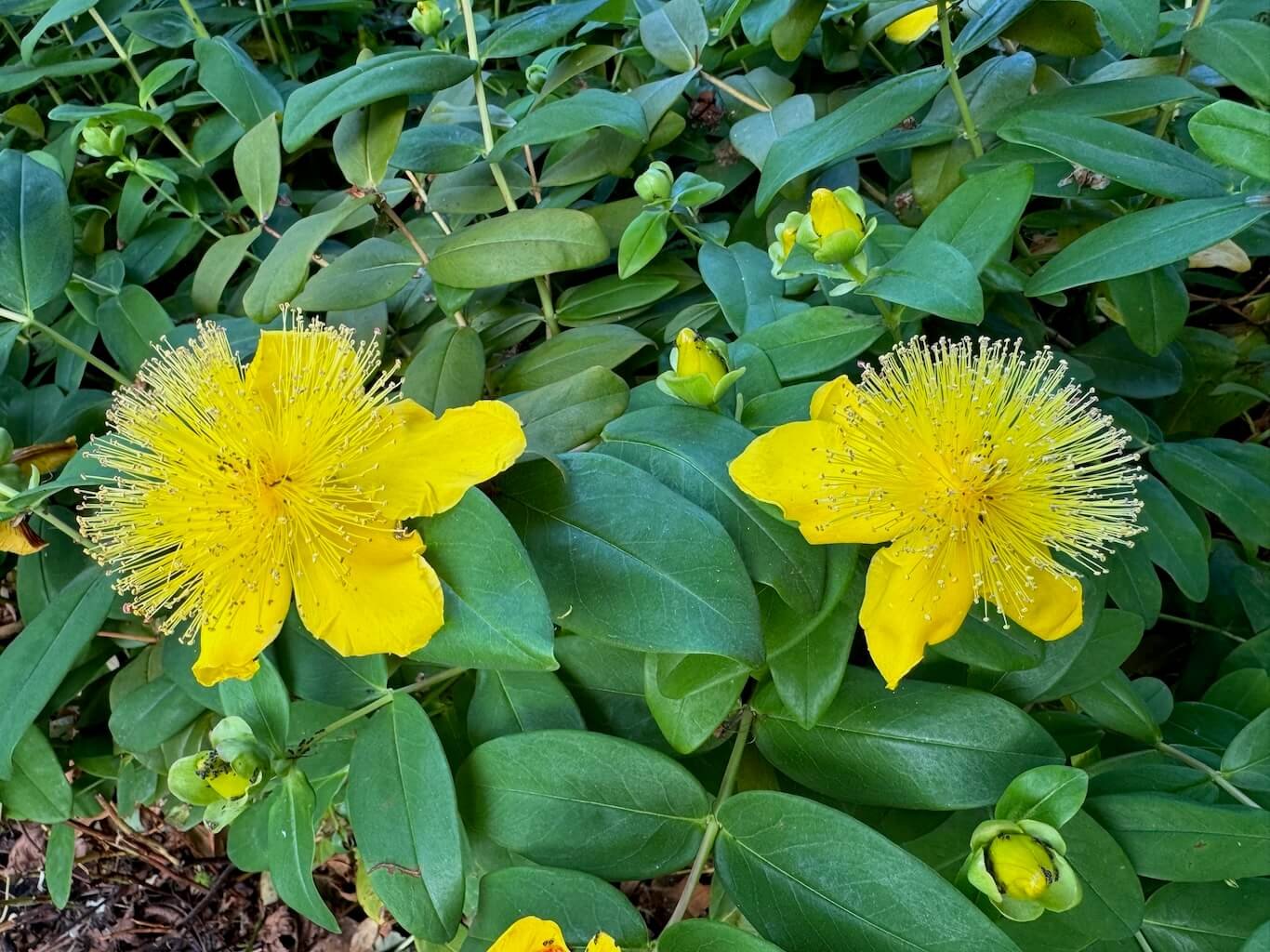DESCRIPTION
Euphorbia myrsinites, commonly known as myrtle spurge or donkey tail spurge, is a low-growing succulent perennial native to southern Europe and western Asia, prized for its unique and attractive foliage. In spring, it produces clusters of small, yellow-green flowers surrounded by bright yellow bracts, adding to its ornamental appeal. The plant’s sprawling, fleshy stems are blue-green and lined with spirally arranged, cylindrical leaves with a distinctive powdery coating. Myrtle Spurge thrives in well-drained soil and full sun, making it well-suited for rock gardens, dry slopes, and Mediterranean-style landscapes. It is a tough, drought-tolerant, and low-maintenance plant, but care should be taken when handling it, as all parts contain a milky sap that can be irritating to the skin and toxic if ingested.
DESCRIPTION
Euphorbia myrsinites, commonly known as myrtle spurge or donkey tail spurge, is a low-growing succulent perennial native to southern Europe and western Asia, prized for its unique and attractive foliage. In spring, it produces clusters of small, yellow-green flowers surrounded by bright yellow bracts, adding to its ornamental appeal. The plant’s sprawling, fleshy stems are blue-green and lined with spirally arranged, cylindrical leaves with a distinctive powdery coating. Myrtle Spurge thrives in well-drained soil and full sun, making it well-suited for rock gardens, dry slopes, and Mediterranean-style landscapes. It is a tough, drought-tolerant, and low-maintenance plant, but care should be taken when handling it, as all parts contain a milky sap that can be irritating to the skin and toxic if ingested.

